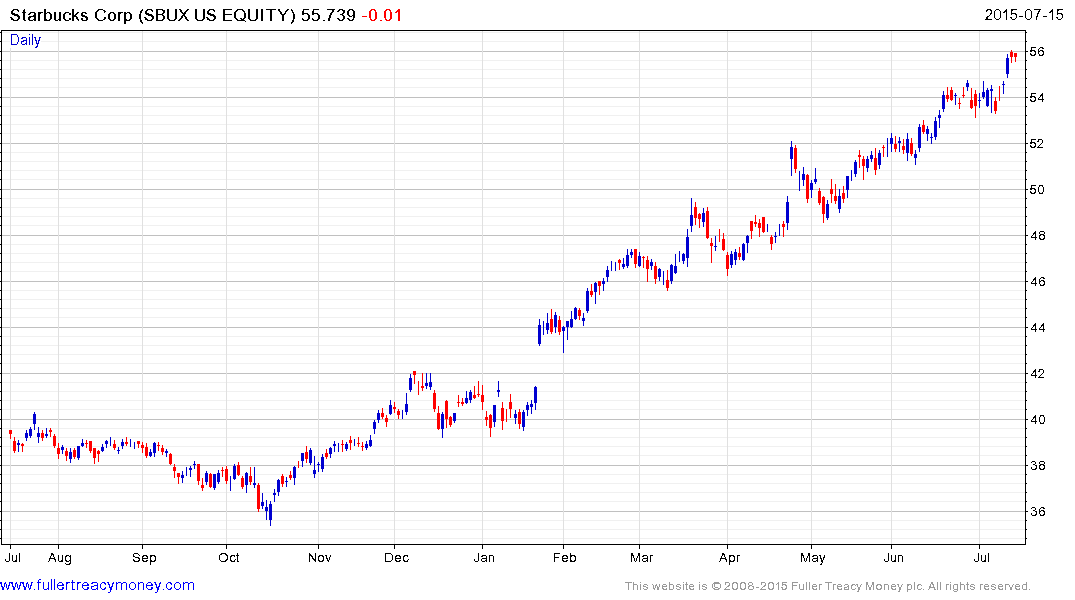Starbucks to Enter Sub-Saharan Africa With Taste Coffee Deal
This article by Janice Kew and Christopher Spillane for Bloomberg may be of interest to subscribers. Here is a section:
“Starbucks is very excited to sell coffee for the first time in some of the same places in Africa where it sources it,” Gonzaga said in an interview. “It’s very important to figure out how to make the stores locally relevant, and Starbucks has excelled at this in other regions.”
?Taste shares rose 20 percent to 5 rand in Johannesburg, the biggest gain since June 2011. That values the company at about 1.5 billion rand ($120 million). Starbucks’ stock was little changed in New York, trading at $55.56 as of 10 a.m.
Restaurant chains, retailers and consumer-goods companies are expanding in sub-Saharan Africa, where the number of middle-class households -- those consuming $15 to $115 a day -- is expected to grow to 40 million by 2030 from 15 million now, according to Johannesburg-based Standard Bank Group Ltd. Yum! Brands Inc.’s Pizza Hut returned to South Africa last year after a seven-year absence to compete with Domino’s Pizza, which is operated locally by Taste Holdings.
With its population growth and improving standards of governance (albeit from a low base) Sub Saharan Africa represents a major emerging market for global consumer discretionary companies. In China, Starbucks succeeded in developing a coffee culture by making Wi-Fi freely available and sticking to a premium pricing model. This made it a destination for young fashionable people looking to appear cool, well-off and eager to sport the most recent technological gadget. It is reasonable to assume they will follow a similar model in Africa.

Starbucks’ decision to raise prices last week highlights comfort with its business model and a commitment to ensuring profitability as it continues to expand globally. The share has been trending consistently higher for five years and while somewhat overextended relative to the 200-day MA at present, a break in the short-term progression of higher reaction lows would be required to signal mean reversion is underway.


